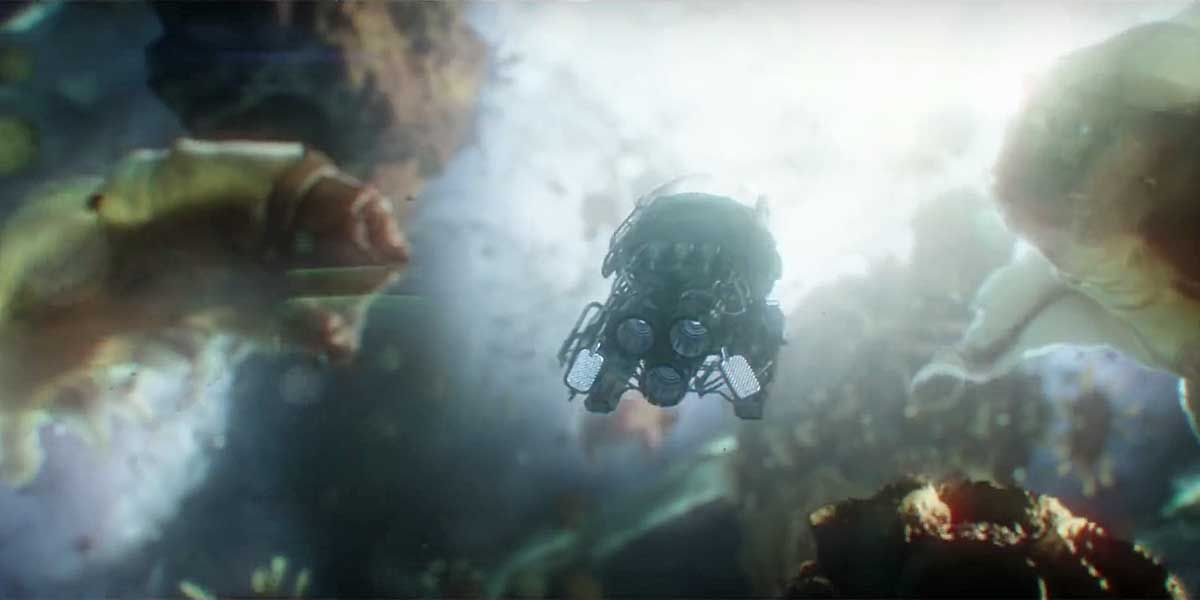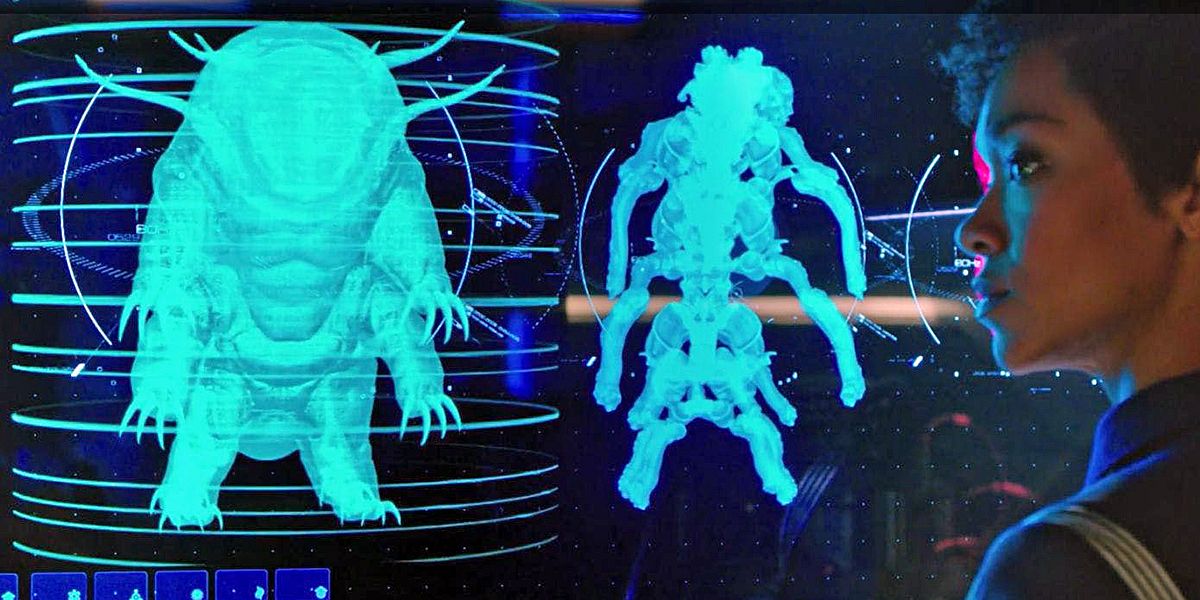The teaser trailer for Marvel's Ant-Man and The Wasp offered a peek at the franchise's return to the Quantum Realm, which plays a significant role in the sequel's plot, and in the process revealed a (surely unintentional) connection to Star Trek: Discovery.
RELATED: Sizing Up (and Breaking Down) Ant-Man and The Wasp's First Trailer
At the 59-second mark, we're shown a sequence undoubtedly inspired by 1966's Fantastic Voyage, as a now-shrunken vessel glimpsed earlier in the footage explores the subatomic alternate dimension in which Janet van Dyne has been lost for more than three decades. The alien-like creatures on either side of the ship are sometimes referred to by such cuddly names as water bears or moss piglets. But anyone who's been watching Star Trek's television revival will undoubtedly undoubtedly know them by their proper name: tardigrades.
They're honest-to-goodness micro-animals that have been found in virtually every environment on Earth, from the Antarctic to the ocean depths, where they dine on plant cells, small invertebrates and the like. Star Trek: Discovery introduced in its third episode the tardigrade's enormous interstellar cousin, not so affectionately dubbed "Ripper," which was found on the Starfleet vessel's sister ship, the U.S.S. Glenn. How it got there was initially a mystery, only unraveled when Michael Burnham (Sonequa Martin-Green) realized the creature was the "super computer" that provided the navigational stability for the Glenn's experimental displacement-activated spore hub drive.
Like the Glenn, Discovery was intended to use the same drive, to use spores to jump across the mycelial network, a microscopic web that stretches across the cosmos (it's all based in real-world science, even if aspects of it get a bit fuzzy). However, unlike the Glenn, Discovery could only jump short distances, rather than disappear and then reappear at virtually any plotted location in the universe. Or, well, beyond, as we later learned. The tardigrade provided that missing piece of the puzzle, at least initially: Through symbiosis, Ripper could communicate with the spores, and when tied in to the engineering system, instinctively performed the calculations required for long jumps. The process proved painful, and damaging, to the tardigrade, resulting in Discovery freeing the creature and finding another "organic computer," Lt. Paul Stamets, named in honor of the American mycologist.
RELATED: Who Is Ghost? Ant-Man and The Wasp's New Villain, Explained
That's not to suggest that Ant-Man and The Wasp will travel the mycelial network through the Quantum Realm, known in Marvel's comics as the Microverse, or that the tardigrades will be anything more than microscopic fauna encountered in the journey. It's more likely just a happy coincidence that the water bear is enjoying its time in the sun, on both television and film. Given that it can survive within mud volcanoes, the tarigrade will probably make it through the experience unscathed.
Opening July 6, director Peyton Reed’s Ant-Man and the Wasp stars Paul Rudd as Scott Lang, Evangeline Lilly as Hope van Dyne, Michael Douglas as Hank Pym, Michelle Pfeiffer as Janet van Dyne, Judy Greer as Maggie, Bobby Canavale as Paxton, Michael Peña as Luis, T.I. as Dave, David Dastmalchian as Kurt, Walton Goggins as Sonny Burch, Hannah John-Kamen as Ghost, and Laurence Fishburne as Bill Foster.


